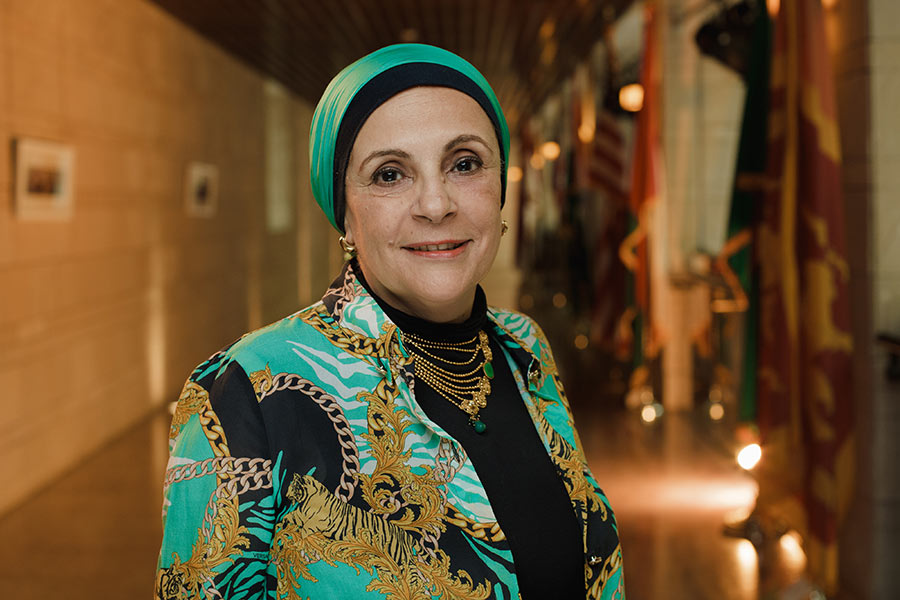
Developing the Arabic linguistic curriculum to support students’ growth mindset
by Zeinab Ibrahim, teaching professor, Arabic Studies, CMU-Q
The Arabic language is thriving and will continue to grow, with more than 370 million speakers worldwide. Arabic has shaped our identity and will remain deeply rooted in our culture due to its religious significance in Islam. After all, how can the language of the everlasting holy Quran falter?
That said, reports have long circulated in the media about existential threats to the Arabic language and its potential disappearance. And, it is certainly the case that a gap still exists between Arab students and their language, due to educational curricula that fall short of modern teaching techniques and fail to address student needs, but rather instill a feeling among students that Arabic doesn’t have a place in their real lives.
Modern curricula are greatly influenced by psychological factors and incorporate new teaching techniques that Arab schools have yet to embrace. This has encouraged parents to enroll their children in international schools, which adopt educational systems that cater to students as individuals with a capacity to excel, analyze and research.
Speaking English or French has been long associated with the concept of prestige in sociolinguistics. This phenomenon dates back to the pre-World War II era when French and British English were spoken by the prominent members of a community. Today, this level of regard has also become associated with American English.
However, this does not mean that there is an existential threat to Arabic, and is not an indication that our language is fading, as some would argue. By speaking a foreign language, most likely English, an individual is sending a message that he or she is keeping pace with the age of technological advancement and belongs to a privileged economic and social class. Yet one’s mother tongue remains the root of one’s culture and, by extension, one’s identity.
In any case, there is ample evidence that the Arabic language is thriving. It is the fourth most spoken language in the world after Chinese, Hindi and English, while the number of Arabic-speaking nations ranks second only to English-speaking countries, according to a study by Ulrich Ammon, a Professor of Linguistics at the University of Dusseldorf.
Another strong indicator of the increasing importance of Arabic globally is its adoption as one of the six official languages used by the United Nations General Assembly.
Indeed, Pew Research Center identified Arabic as the fastest-growing language in the US, and prestigious universities around the world offer Arabic language programs. These include Harvard, Cambridge and the Sorbonne, among many others.
We must also pay tribute to the Arab media for disseminating classical Arabic in world forums. News media outlets are playing a key role in this regard by subjecting their staff to intensive courses to ensure they master Arabic. And, I believe that this model could be replicated in the classroom.
According to the latest studies, one of the most important factors behind a successful learning experience is linking the educational material to student life by adopting an interactive study approach.
In this context, spoken Arabic could project a modern image of the language that fits in the everyday life of Arab students.
Therefore, it is important to comprehensively revise the Arabic language educational curriculum to give Arabic linguists the opportunity to modernize teaching techniques in a bid to foster student growth. Students must learn about Arabic rather than learn Arabic. Reading should come to represent an essential pillar of the educational curriculum, because this approach has proven far more successful than recitation and memorization.
For instance, one of my students at Carnegie Mellon University in Qatar had concerns about his first semester Arabic course, which prompted me to give my students the freedom to choose discussion topics in class, including weak or poorly written articles at first. By the end of the semester, however, my students were fluently speaking classical Arabic and leading discussions using a rich vocabulary.
This teaching approach is even more successful when it comes to children, as I experienced firsthand at Qatar Academy. There, pupils spoke classical Arabic fluently without receiving any grammatical lessons, another indication of the success of the interactive discussion approach.
Along these lines, some of the most important advice I can offer to parents is not to address their children in English. According to the latest studies, it is of utmost importance to speak to children in their first language, as per the mental grammar theory that suggests that the ability to learn grammar is hardwired into the brain. Of course, children can always learn a multitude of different languages, but their parents should speak to them in their mother tongue. By adopting this habit across our nation, we can be sure that the Arabic language will thrive for many generations to come.
Published in Al Arab, December 2016
